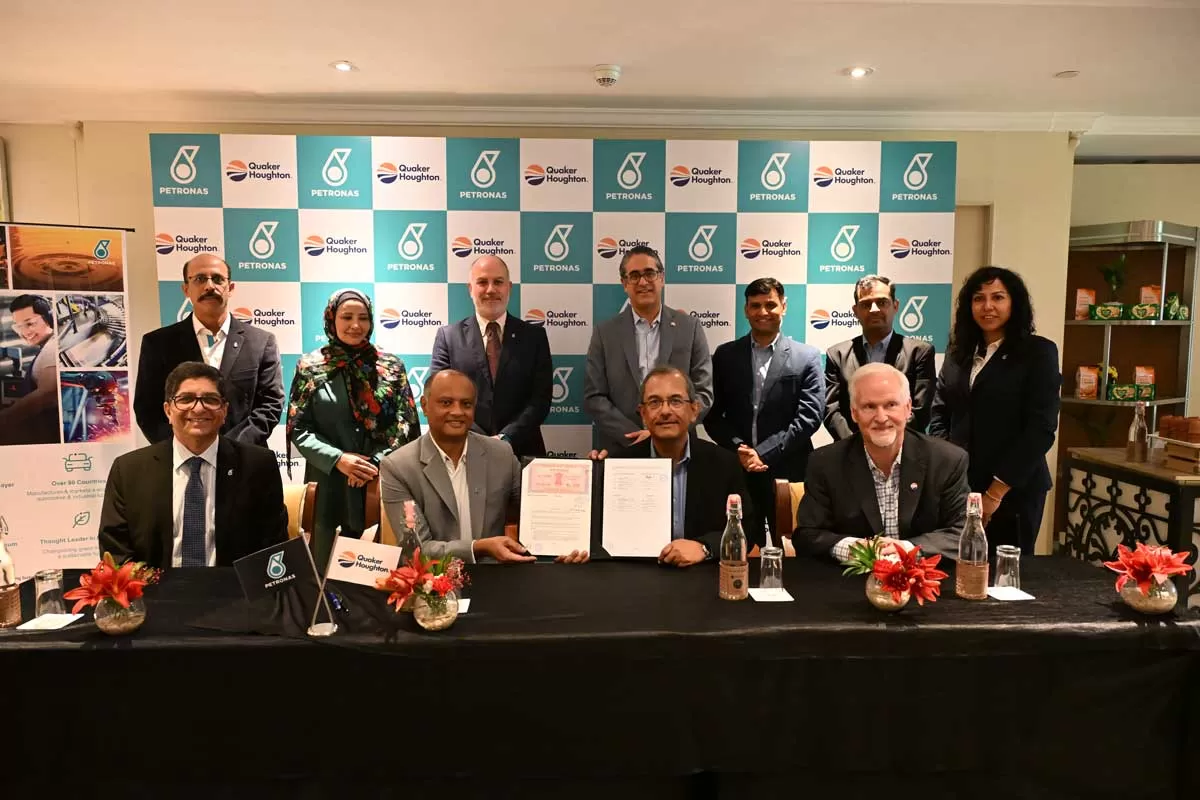The challenging yet crucial terrain of India’s Northeast requires attention for both equitable development and strategic border security. Encompassing eight states across 2,62,476 sq km, the region comprises 8 per cent of India's land but lacks connectivity. To enhance infrastructure and security, the Central Government has allocated Rs 1.6 trillion for new projects. Arunachal Pradesh received the highest allotment at Rs 440 billion, followed by Assam (Rs 380 billion), Manipur (Rs 154.99 billion), Meghalaya (Rs 125 billion), Tripura (Rs 124.26 billion), Mizoram (Rs 66.64 billion), Sikkim (Rs 20 billion) and Nagaland
(Rs 32.35 billion). National Highways and Infrastructure Development Corporation (NHIDCL) is executing six projects worth Rs 185.39 billion.
Background
The North East shares a 5,483-km boundary with neighbouring countries, offering connectivity to ASEAN nations and rich natural resources. Despite its strategic location, the region lagged in development owing to tough terrain, insurgency, corruption and neglect. After the 1962 Indo-China War, isolationist policies aimed to deter invasion. But recent times have seen the inception of developmental projects to integrate the region, improving security and growth. Projects include highways, tunnels, bridges, airports, rail and waterways, shedding the isolationist policy and enhancing connectivity with the rest of India through the river network, like the Brahmaputra and Barak.
Speaking at the Infrastructure Today - North East Conclave in Guwahati, Parimal Suklabaidya, Minister of Transport, Government of Assam, mentioned that infrastructure will not just bring road and rail connectivity but will also bring “Dil ka connectivity”, highlighting the long-term effects of ‘isolationism’, causing a disconnect between the populous of the North East Region (NER) and the rest of the country.
Roads
Assam’s transport minister highlighted ongoing efforts to boost road connectivity in India's NER, which is crucial for regional development and international trade. NER boasts 52 km of National Highways per 1,000 sq km, surpassing the national average, underscoring the need for strong road infrastructure. Key agencies, including the Ministry of Road Transport and Highways (MoRTH), NHIDCL, National Highway Authority of India (NHAI) NHAI and Border Roads Organisation (BRO), play vital roles.
MoRTH's SARDP-NE accelerates road development, with projects like Assam's Dhola-Sadia bridge and Meghalaya's Shillong-Nongstoin road expansion fostering connectivity. NHAI achieved 636 km in Assam and 212 km in Meghalaya, while NHIDCL completed 1,184 km across states.
Upcoming projects include Nagaland's Capital Road Connectivity, Aizawl-Tuipang NH-54's two-laning, and integrated checkpoints connecting Bangladesh. Internationally, the India-Myanmar-Thailand Trilateral Highway enhances connectivity, spanning 1,408 km, bolstering India's Look East Policy.
Railways
Turning to railways, the NER boasts a 2,646-km network, featuring over 300 railway stations. The region's railway network density stands at 10.79 km per 1,000 sq km, in contrast to the national average of 419.635 km, revealing the need for further expansion. Seven of the eight North East states enjoy rail network connectivity, with impending completion in Nagaland, Mizoram, Manipur, Sikkim and Meghalaya.
Rajneesh Kumar, Chief Freight Transportation Manager, North East Frontier Railway, mentioned the rail projects underway in NER, which include the New Sikkim Railway Project's Sivok–Rangpo line (44 km), which aims to connect Gangtok and Rangpo in Sikkim to Sevok on the West Bengal border. Moreover, 20 railway projects (14 new lines and six doublings) totalling 2,011 km in length and costing Rs 744.85 billion are under development in or partly in the NER. Notably, the Agartala-Akhaura railway line (5.46 km in India, 6.8 km in Bangladesh) is transforming Tripura's connectivity from landlocked to well-linked. Other key projects include the new gauge Bairabi Sairang railway in Mizoram and the Dhansiri-Kohima-Zubza line in Nagaland.
Air
AK SHARMA, General Manager, NER, Airport Authority of India informed that the NER is served by 15 airports. The integrated terminal at Maharaja Bir Bikram Airport has recently been upgraded, becoming the region's third international airport, joining Guwahati and Imphal. Notably, helicopter services by Pavan Hans, Aone, and others are available across hilly states like Arunachal Pradesh, Meghalaya, Mizoram, Tripura, and Sikkim. The NER is actively engaged in aviation advancements, including the ongoing construction of the Greenfield Hollongi Airport in Arunachal Pradesh and the New Greenfield Airport in Pakyong, Sikkim.
Underscoring connectivity enhancement, the Central Government has greenlit 78 additional routes as part of the fourth phase of the Regional Connectivity Scheme (RCS) – Ude Desh Ka Aam Nagrik (UDAN). These initiatives are strategically aimed at fortifying connectivity in the North East, hilly terrains and island regions.
Water
A Selvakumar, Director, Inland Waterways Authority of India, informed that 20 new waterways in NER are declared as National Waterways. At present, NW2 - River Brahmaputra, spanning 891 km from Dhubri to Sadiya, is operational. National Waterway 2, Sadiya-Dhubri along the India-Bangladesh border, is operational too. Nineteen more waterways are in development, including the Indo-Bangladesh Protocol route benefiting Northeastern states. National Waterway-16 along River Barak (121 km) is under construction, aiming to boost cargo movement with Bangladesh. Almost Rs 17 billion has been invested in developing 13 new waterways, enhancing connectivity and trade prospects.
Ropeways
Under the Parvatmala Pariyojana, Union Minister of Road Transport and Highways Nitin Gadkari has said that the government plans to develop 250+ projects with a ropeway length of 1,200+ km over five years. He laid emphasis on the PPP model under the hybrid annuity model (HAM) with a 60 per cent contribution by the Government of India. He also added that promoting the manufacturing of ropeway components under the Make in India initiative was on the agenda. The minister followed this up with a visit to Austria and invited its manufacturers to invest in ropeway systems. Ropeways can be a game-changer, especially for the Northeast and hilly regions if we can establish safety for these systems. Additionally, Prakash Gaur, CEO, of National Highway Logistics Management, NHAI, said that the region is building multiple ropeway projects aimed at decongesting existing routes and providing a more affordable alternative to commuters. He mentioned that the Itanagar- Neharlagun ropeway which is being built to decongest the Itanagar Capital Region (ITR) and the Kamakhya Temple Ropeway will improve travel for pilgrims in the festive seasons.
Multi-modal logistics
Further, a multimodal logistics centre is also on the anvil to be built in Jogighopa, Assam. According to Gadkari, this will change the game for the North East. “There is the Brahmaputra. There will be a railway, a national highway system and an airport. Within two to three months, it will be finished,” he averred. A significant component of the ambitious Bharatmala Pariyojana is the development of the logistics park. It will facilitate transit by road, rail, air and water because it is situated along the Brahmaputra River. The 300-acre Multi-Modal Logistics Park in Jogighopa, which is close to the Inland Waterways Terminal that is still under construction, will cost $7.640 billion to build. It may be strategically connected to Bhutan in the north and Bangladesh in the south through roads and waterways, thanks to its location 154 km to the west of Guwahati.Other projects
The Government's focus on NER connectivity is evident through initiatives like the PM-DevINE Scheme and NESIDS, aiming for holistic development. An allocation of Rs 15 billion funds social and infrastructural projects, including road and bridge development. NER is poised to thrive as connectivity continues to improve, aligning with comprehensive development initiatives.
In his speech, Arun Goyal, Member, Central Electricity Regulatory Commission spoke about how climate change is a reality and the central government aims to increase 50 per cent of India’s power generation through renewable energy by 2030 and that North East can have a crucial role to play as the region holds India’s 40 per cent of hydropower potential. He also mentioned the new hydro projects of Kameng and Subansari, which will greatly boost the generation capacity to cater to its ever increasing demands.
BRO’s work
The Border Roads Organisation (BRO) is a statutory organisation under the Ministry of Defence, responsible for the construction and maintenance of road networks in our border regions.
In past years, BRO’s involvement in the development of roads and infrastructure has substantially increased with a 30 per cent average growth of road construction in states like Arunachal Pradesh and Sikkim. In fact, BRO is outpacing the Central Government and the states in the construction of roads with it building a road network of 6,195 km, whereas the Central Government completed building 3,794 km of roads.
“We have connected areas that were unconnected by road; Ziro was the only district in the world that did not have road connectivity and BRO brought connectivity to the outside world for the first time in 75 years,” announced Lieutenant General Rajeev Chaudhry, Director General, BRO, at the Infrastructure Today Conclave - North East in Guwahati. He further stated that BRO has accelerated its development in providing last-mile connectivity by building bridges and tunnels.
Challenges in building infrastructure in NER
NER faces connectivity challenges despite its potential. Rugged terrain and sparse habitation hinder socio-economic growth, while delays in land acquisition and clearances and material scarcity require innovative solutions.
Over-reliance on road transport inflates costs and weakens the competitiveness of local goods. A diverse approach, like a public-private regional airline with small aircraft, could expand connectivity.
National contractors with large financial and execution capacity shy away from projects complaining that bidding packages are too small for an economically efficient return on capital deployed.
Efficient logistics via a single-window system and community awareness are vital. Integrating local views into policymaking provides insights. That said, the Government's commitment to NER's infrastructure is promising.
Recent data from MORTH raises concerns about slow progress in Assam and the Northeast. Despite approving 192 projects and 13 bridge works in three years, only eight projects were completed out of 192, worth Rs 13.69 billion. With an allocation of Rs 79.08 billion for 3,708-km worth of projects, the pace is concerning. Assam leads with 887 km and Rs. 37.40 billion, but just 10 projects covering 110 km and Rs. 12.26 billion have been completed. Arunachal Pradesh has advanced with 22 projects of 419 km and Rs. 47.91 billion, and Nagaland with 11 projects of 271 km and Rs. 27.31 billion. Slow progress affects traffic and wider development. Assam's NH network impacts connectivity, hindering India's policies. Addressing fund allocation and fostering an expedited construction environment is crucial. Overcoming these hurdles can turn challenges into opportunities for enhanced connectivity and prosperity.

















